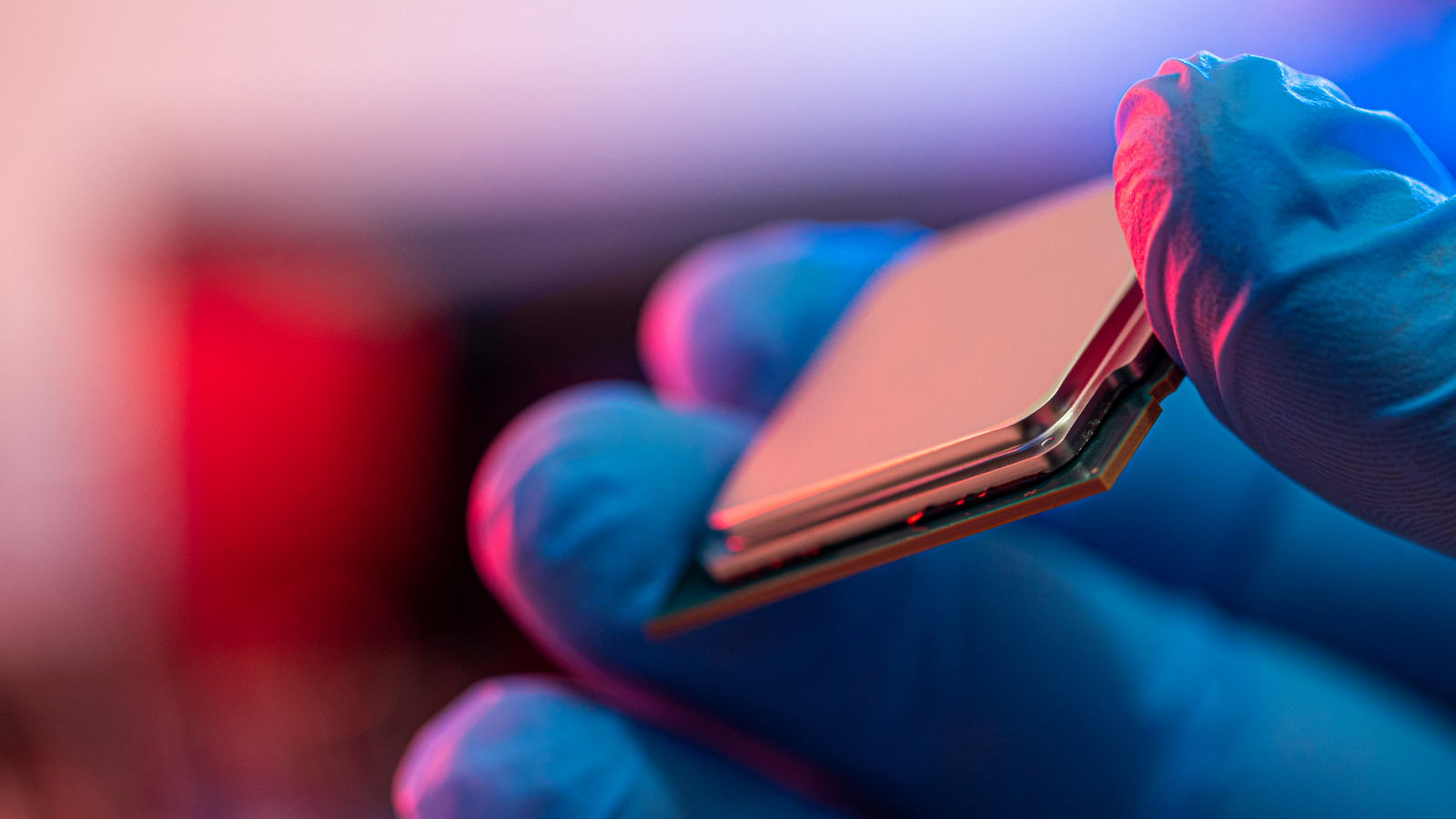An amateur scuba diving club recently unearthed the biggest trove of gold coins ever found in Israel. The stash was revealed after winter storms shifted the sands off the coast of Caesarea in Israel. The coins are about 1,000-years old, and were minted by the Fatimid Caliphate, which ruled much of North Africa and the Mediterranean at the time. [Read the full story on the trove of gold coins]
Bustling city
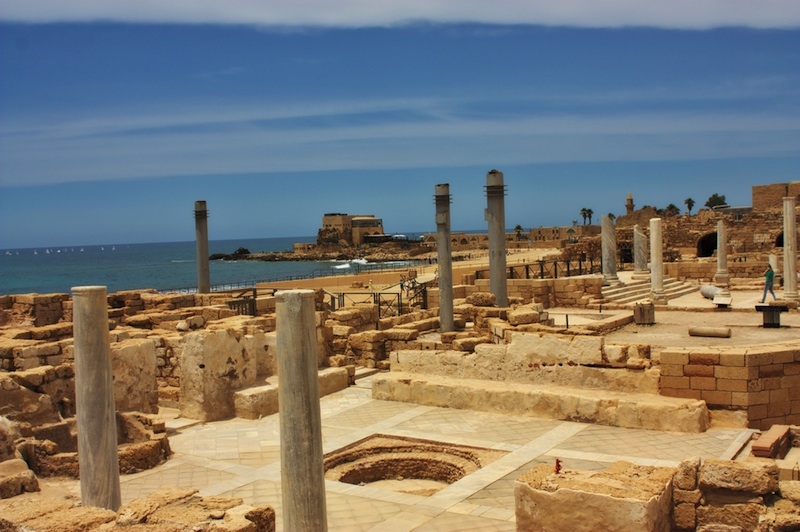
The coins were found in Caesarea National Park, an archeological heritage site that preservers the remains of the ancient city of Caesarea. Caesarea was a harbor city founded by King Herod the Great about 2,000 years ago. At the time the coins were minted, the city was a bustling, prosperous port that played an important role in the Fatimid's trading network.
More than toys

Earlier this year, scuba divers were exploring off the coast of Israel in Caesarea National Park when they noticed what looked like a toy coin. When they took a closer look, they found ancient gold coins shimmering in the light. The club's leader reported the find, and the Israel Antiquities Authority returned to the site with metal detectors in hand.
Mint condition
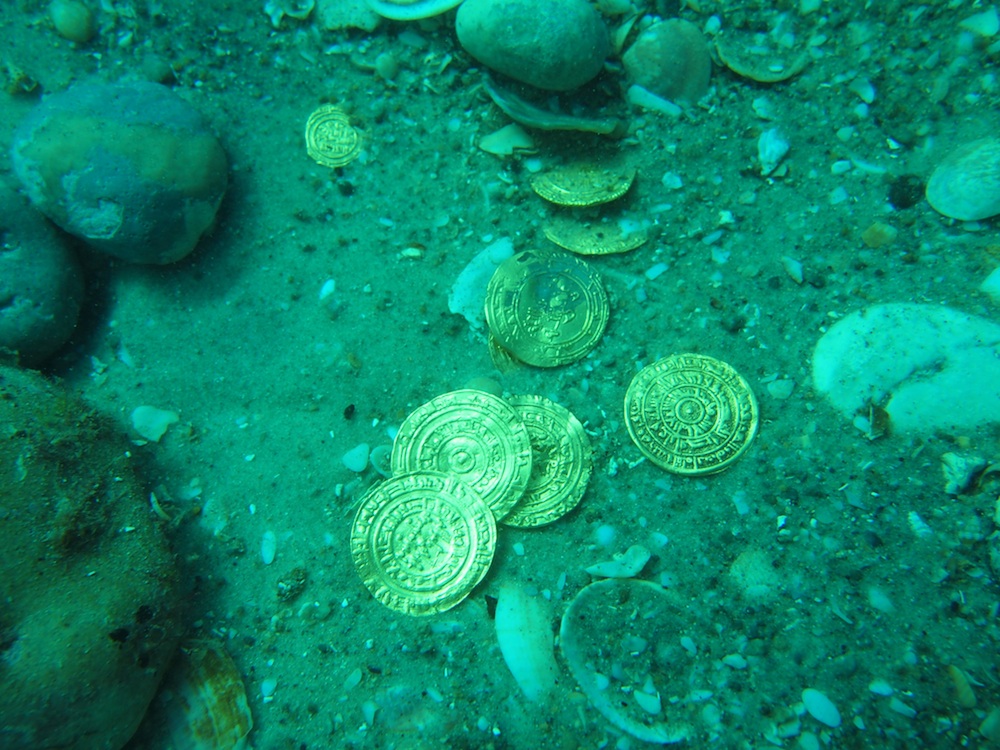
The antiquities authority soon found a huge trove of gold coins, the largest ever unearthed in Israel. All told, about 2,000 gold coins were discovered under the ocean. Despite spending a millenium in the harsh saltwater environment, the coins were in pristine condition and needed no refurbishing or conservation work. That's because gold, as a noble metal, does not react with air or water.
Sign up for the Live Science daily newsletter now
Get the world’s most fascinating discoveries delivered straight to your inbox.
Wealthy Kingdom
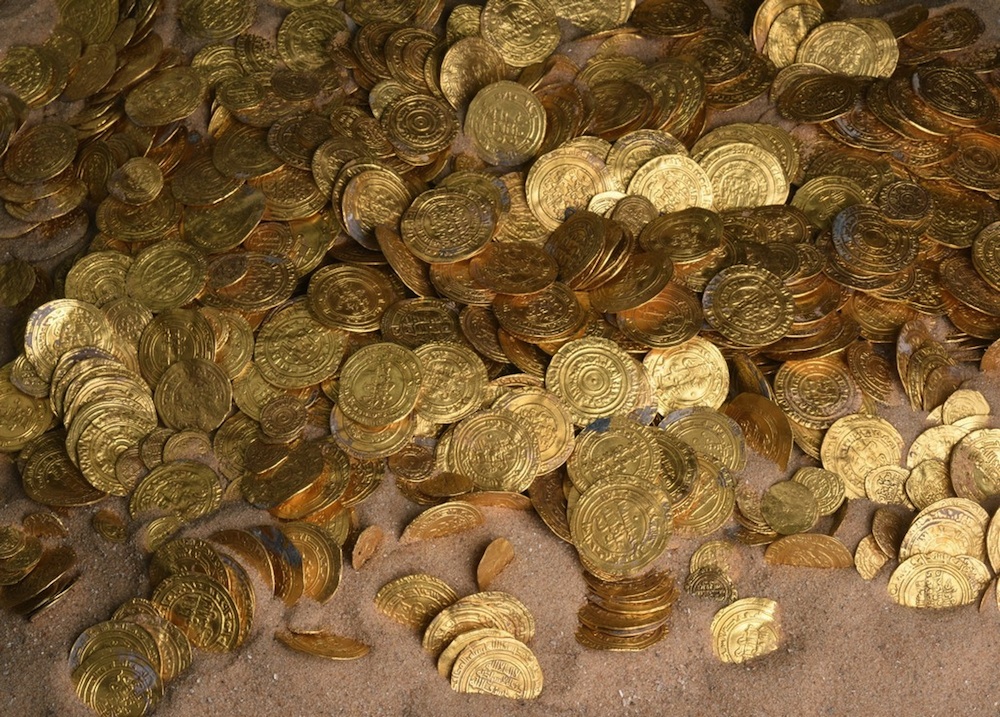
The gold coins were minted by caliphs who ruled the Fatimid Kingdom, which spanned much of North Africa and the Mediterranean. The earliest coin in the trove was minted in Sicility in the ninth century, though most were minted by the caliphs Al Hakim and Al Zahir, who ruled between A.D. 996 and A.D. 1031. Some of the same types of coins were circulating decades later, when crusaders conquered Jerusalem in A.D. 1099.
Princely sum

It's not clear how this huge trove of coins came to rest at the bottom of the sea. The money which came in denominations of dinars, half dinars, and quarter dinars, represented a princely sum in the Medieval time when it was circulating. For instance, freeing several captives would have cost hundreds of dinars, according to eleventh and twelfth century documents found in the Cairo Geniza, a trove of Jewish documents found in the storeroom of an ancient Jewish synagogue.
Teeth marks
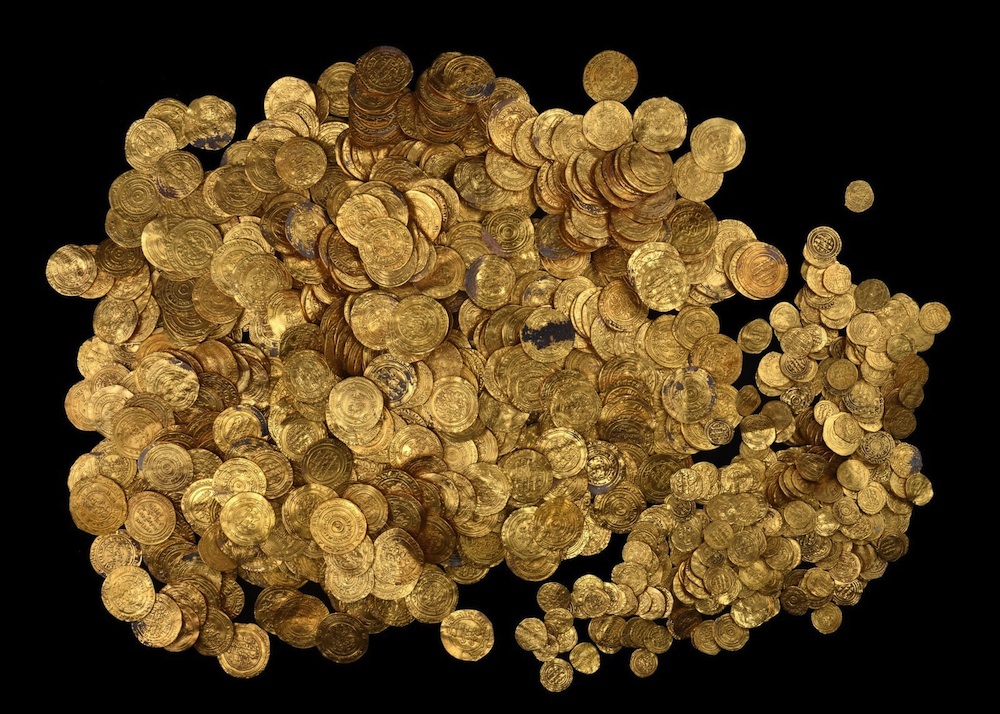
Some of the coins harbored tooth marks, likely from traders who tested the coins' metal by biting into them. (Gold is a soft metal that leaves tooth impressions, while harder, but cheaper metals do not.) Some of the coins had scratch marks from frequent use, while others seemed to be newly minted.
Lost to sea

It's not clear how such a huge trove of gold coins wound up buried beneath the waves. One possibility is that a treasury ship laden with tax receipts sank off the coast of Caesarea. Another possibility is that the haul came from a merchant ship that traded up and down the Mediterranean, but sank on one of its routes.
Follow Tia Ghose on Twitter and Google+. Follow LiveScience @livescience, Facebook & Google+.

Tia is the managing editor and was previously a senior writer for Live Science. Her work has appeared in Scientific American, Wired.com and other outlets. She holds a master's degree in bioengineering from the University of Washington, a graduate certificate in science writing from UC Santa Cruz and a bachelor's degree in mechanical engineering from the University of Texas at Austin. Tia was part of a team at the Milwaukee Journal Sentinel that published the Empty Cradles series on preterm births, which won multiple awards, including the 2012 Casey Medal for Meritorious Journalism.
